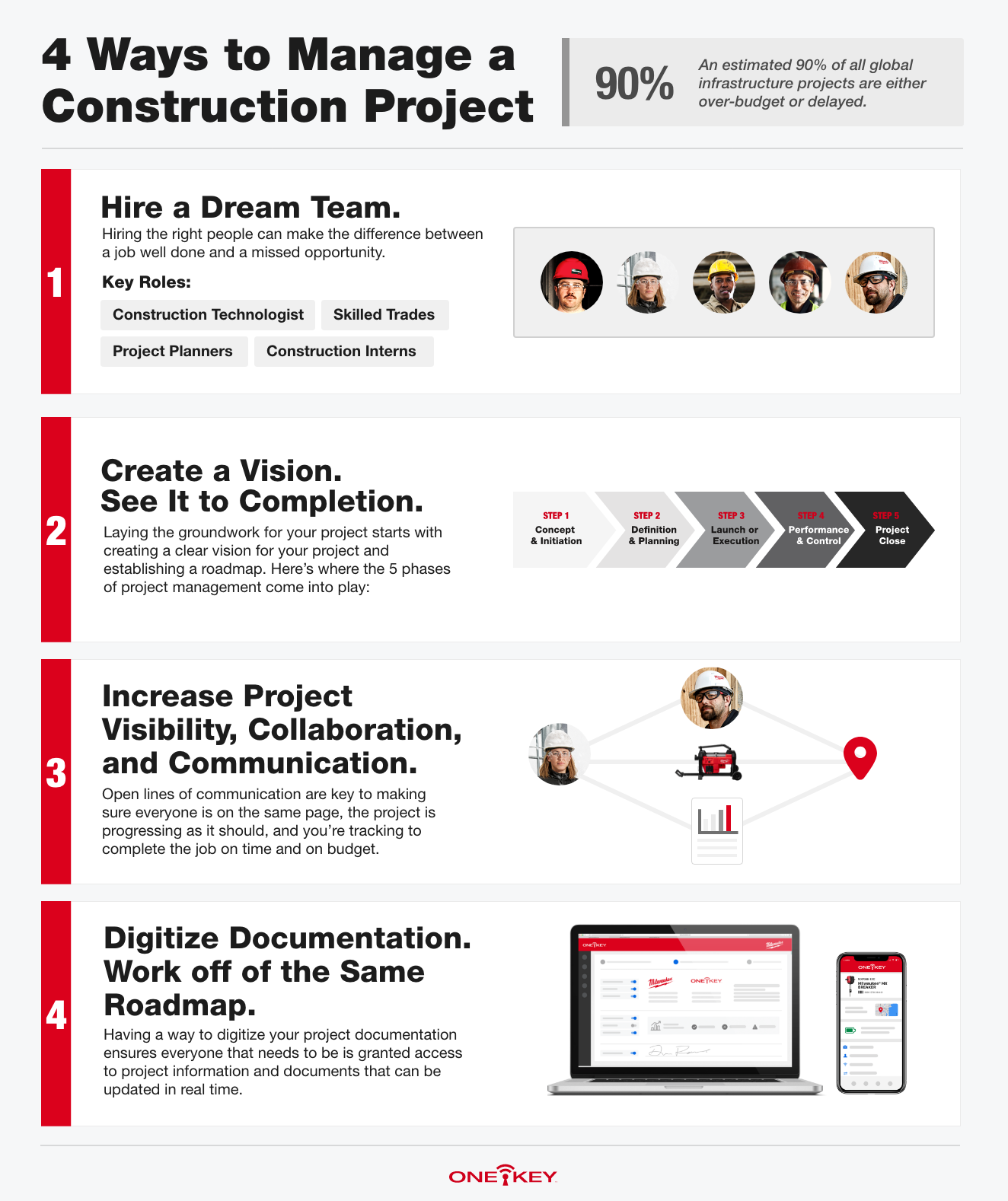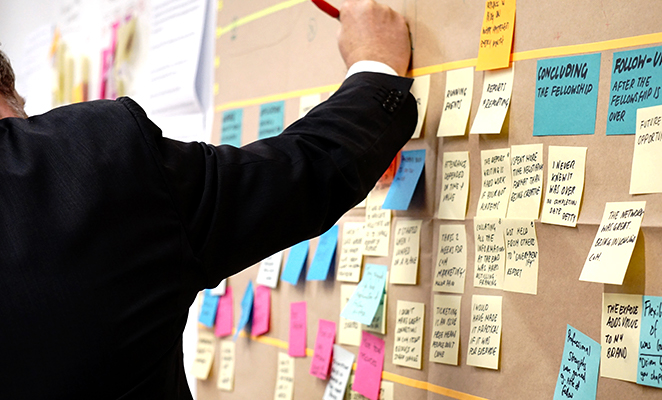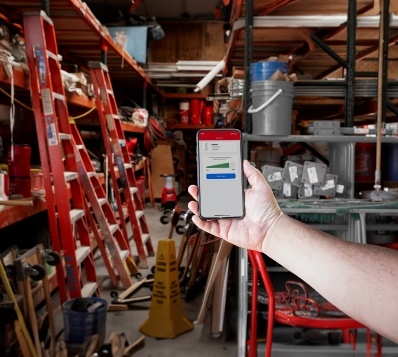And while technological advances are quickly reshaping how project managers can approach construction projects with a fresh perspective, adoption remains a slow uptick. It’s only natural. Collaborating with engineers and architects, scheduling work, managing construction crews onsite, overseeing tool teams responsible for the efficient flow of inventory and tool tracking, or working with the accounting team in the back office to ensure you stay on budget—that’s a lot to keep track of! Though, constant prioritization and finding a perfect balance are essential, as they can make or break you. One study, in fact, found that 90% of all global infrastructure projects are either over-budget or delayed. From design renderings to reality, there are a lot of moving parts and various tradespeople working simultaneously, whose progress needs to be synchronized and supervised.
But this article isn’t to remind you how hard your job is—We’re here to help you lighten the load with some tips meant to empower your teams to work more efficiently. With that in mind, we’ve narrowed it down to 4 tips on how you can successfully lead (and inspire) the team and supercharge their efforts.

1. Hire a Dream Team.
Hiring the right people can make the difference between a job well done and a missed opportunity. The need for talent in the construction industry is ever apparent. In 2019, nearly 80% of construction firms expected to expand their headcounts, up from 75% in 2018 and 73% in 2017.

By similar proportions, however, the same group reported they were unable to fill salaried and craft positions, citing skilled labor shortages and similar staffing challenges which unexpectedly rose costs and resulted in higher prices in new bids or contractors and longer completion times for bids or contracts. While the unexpected rise and impact of COVID-19 has led to unprecedented consequences—with 40% of construction firms experiencing layoffs and the industry by and large expecting a slow recovery, predicted in a recent McKinsey survey—firms are bouncing back with cautious optimism.
With so much uncertainty, what is clear is, you’ll want to be planning for a post-COVID-19 world and this starts with a reinvented hiring strategy that is built to scale with the rapidly evolving industry. Do you have the right team in place?
-
Construction technologists: These professionals, digital natives if you will, are primed with a unique blend of technological expertise and a construction background that will be invaluable in building up your company’s tech stack. They’ll help refresh old processes with a forward-thinking approach to data management, weigh options like available software, and all around bring your company out of the stone age while they’ll also be responsible for staying abreast with technological trends that can help keep you on the cutting edge of construction technology.
-
Planners: Nothing stalls progress like poor planning. That’s why it’s crucial to have a strong strategic team in place—from building planners like architects and civil engineers to onsite planners like a lean, mean tool team.
-
Skilled trades: Who’s doing the actual onsite work? Building trades like plumbers, electricians, and carpenters. Mechanical trades like HVAC installers and mechanical installers. Industrial trades like ironworkers, line installers, and metal fabricators. That’s who!
-
Interns: While traditional internships for skilled trades are common in the construction industry, some companies have begun creating opportunities for degree-seeking students in areas like civil engineering. These relationships could be mutually beneficial, helping companies with extra hands onsite while creating early engagement for students and fostering strong industry connections. Fresh blood is crucial to breathing new life into our industry.
And, of course at the helm, as a construction project manager, you’re responsible for having the right feet on the ground and overseeing the whole process.
2. Create a Vision, See It to Completion.
There are many questions that arise at the start of a project:
-
Who are the stakeholders?
-
Who’s responsible for what?
-
What’s the project scope, budget, critical-to-qualities (CTQs)?
Just like the building or project you’re constructing is no stronger than the foundation upon which it’s built, laying the groundwork for your project starts with creating a clear vision for your project and establishing a roadmap, which you’ll use to see your project through its entire lifecycle and drive it to completion.

Here’s where the 5 phases of project management come into play:
-
Initiation: Drawing up your project roadmap.
-
Planning: Figuring out the scope and budget, scheduling work, forecasting risks.
-
Launch/Execution: Status and tracking, KPIs, QA.
-
Performance/Control: Setting objectives, quality deliverables, effort/cost tracking, gauging performance.
-
Closure: Checking off project punchlists, reporting back to HQ, determining project successes and communicating future improvements.
Once you’ve got these 5 phases in front of you as they relate to your project, you can bake in incremental deliverables and benchmarks based on the stages of your project’s lifecycle you’re in at any given moment.

Then, establish measurable and trackable success criteria, such as:
-
Budget and schedule targets
-
Product quality and functionality checks
-
Government and/or industry regulation compliances
With the foundational groundwork and planning in place, you can more clearly delineate the mission and goals of your project, evaluate successes and failures through each phase of the project, and track toward a final product that’s covered all your bases and perfected, to meet or exceed all expectations.
3. Increase Project Visibility, Facilitate Collaboration, and Streamline Communication in Real Time.
Open lines of communication are key to making sure everyone is on the same page, the project is progressing as it should, and you’re tracking to complete the job on budget and on time.

-
Jobsite visibility tools: If you can’t be onsite, how do you know work is getting completed on time and on spec? This could consist of anything from construction drones to wearables used for jobsite walkthroughs and safety inspections, to tool tracking and equipment tagging that ensures what’s needed onsite is there when it’s supposed to be, to smart tools and devices that can be used to generate reports for inspectors and clients.
-
Integrated software: You don’t have to make your IT team sweat so much, nor force all your teams to use one program, when you pick a software suite that neatly integrates with the major construction software platforms out there for the various stages of construction: bidding and prequalification, planning and designing, field productivity, billing and financials, etc. If you’re not sure if your software provider offers an integration, ask them about it or if they would consider building one for you. Integrated software can help ensure there's seamless data transfer between your various teams and create a healthy ecosystem in which your project productivity thrives.

4. Digitize Documentation.
Having a way to digitize your project documentation, such as through a cloud-based construction collaboration platform, ensures everyone that needs to be is granted access to project information and documents that can be updated in real time. This also always ensures everyone’s working off the right information.

We recently released multi-user functionality within the One-Key platform that helps tool teams and inventory managers collaborate in one unified account, while admins can see changes made by team members and set team permissions as necessary. Similar software exists for all stages of project management.
Construction Job Costing (Updated for 2023)
What’s more, we recently updated the One-Key app with a Job Costing App Feature.
Construction job costing is an important process employed by project managers at large construction companies to help them stay on top of the budgets of multiple large-scale construction projects.
- Users of the One-Key app can now assign daily and/or weekly rental rates to individual tools as well as tool kits they’re sending to a given job in bulk.
- When these tools are transferred to the jobsite, One-Key can calculate the cost accrued for each day those items are in the field.
How to Project Manage a Construction Project: 4 Ways to Supercharge Your Process in 2021
Your job as a construction project manager is a big one. But you can be enormously successful when you:
-
Hire the right team
-
Create the right vision and see it to completion
-
Foster a culture of collaboration by adopting tools that help you monitor progress as well as ones that help your teams work more seamlessly, together (not divided)!
-
Digitize your project documentation so you have everything backed up to the cloud and everyone is working off the same roadmap






